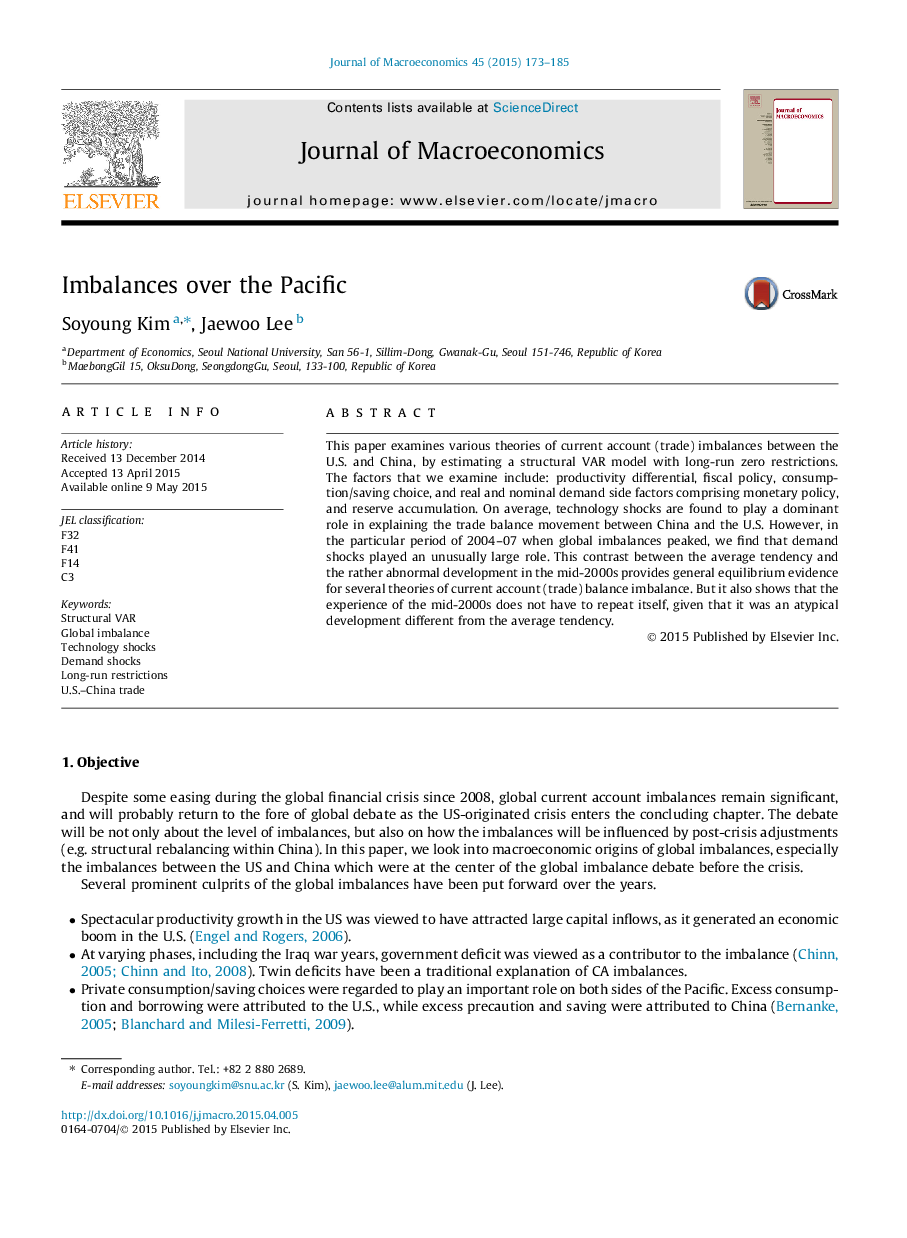| Article ID | Journal | Published Year | Pages | File Type |
|---|---|---|---|---|
| 965759 | Journal of Macroeconomics | 2015 | 13 Pages |
Abstract
This paper examines various theories of current account (trade) imbalances between the U.S. and China, by estimating a structural VAR model with long-run zero restrictions. The factors that we examine include: productivity differential, fiscal policy, consumption/saving choice, and real and nominal demand side factors comprising monetary policy, and reserve accumulation. On average, technology shocks are found to play a dominant role in explaining the trade balance movement between China and the U.S. However, in the particular period of 2004-07 when global imbalances peaked, we find that demand shocks played an unusually large role. This contrast between the average tendency and the rather abnormal development in the mid-2000s provides general equilibrium evidence for several theories of current account (trade) balance imbalance. But it also shows that the experience of the mid-2000s does not have to repeat itself, given that it was an atypical development different from the average tendency.
Related Topics
Social Sciences and Humanities
Economics, Econometrics and Finance
Economics and Econometrics
Authors
Soyoung Kim, Jaewoo Lee,
